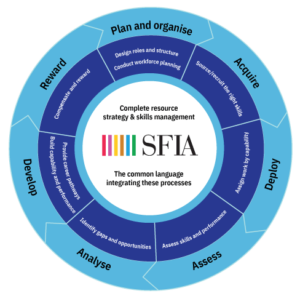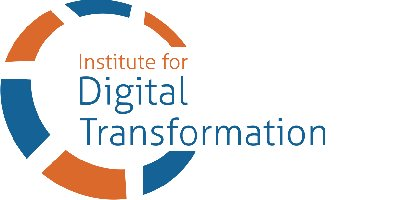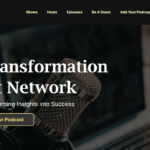In a previous article here in the Journal, I wrote about some of the many definitions of digital transformation I’ve heard over the past couple of years, and there are almost as many different definitions as there are mentions of it. This lack of clear and common language makes both internal and external discussions about transformation difficult.
When we try to discuss the organization’s capability to transform, the conversation grows even more complex. We may talk about changing the way we work, but at the same time, we realize that our organizational culture consists mainly of “the way we do things here.” How do people do things here? What do they know? What else can they do besides what they are doing now? What should they be doing that they are not doing now, and do they have the skill set to do it?
Organizations that win understand that, as they transform their business to embrace the promise of digital, they must transform their employee base to ensure that they have the requisite skills for not only today’s projects, but for those in the future. – Aaron Skonnard, co-founder of Pluralsight, on BuiltIn
According to the Institute’s definition, digital transformation requires the “reshaping of an organization that reorients it around the customer experience, business value, and constant change.” Transformation does not have an end date. Even if your organization has come a long way, you need to understand where you are, where you need to be, and the path to get from one to the other. Of course, you must consider the requisite skills and whether your people have them or need them.
I often draw the analogy to the popular “morph” effect used so often in video production: There is a beginning image and an ending image, and the morphing software performs the visual magic of transforming one into the other. In the case of your organization’s transformation, however, it is your people who are the “software” that makes the non-magical changes happen.
Do you know which skills will be valuable to your transformation, which ones your organization already has in-house, and which training you’ll need to provide to acquire the necessary skills? Do people on your teams have skills and competencies that would be valuable elsewhere in the organization or at another level of responsibility?
You may be thinking that your HR department already knows these things, having accumulated job descriptions for everyone in the organization, but job descriptions are often written to provide a list of duties to prospective candidates for employment, not to provide an inventory of skills and competencies to the organization.
Do you know what’s in your own job description? When was the last time you read it? If you have read it recently, does it bear much resemblance to what you actually do? Does it list the skills you have acquired during your employment?
Job descriptions tend to be one-size-fits-all, bland overviews written from the company’s point of view. – Marissa Peretz on Forbes
Before you begin having your human capital people download one of the many available templates for building a skills inventory and launch a project to accomplish it, you should know that there is already a framework and a tool available to you called the Skills Framework for the Information Age, or SFIA (pronounced sehfeeyah – similar to Sophia). A vital benefit of this framework for your organization is that it provides a common language for the wide range of skills and competencies necessary for transformation to be successful, especially given the rapid and continuing change demanded by the digital environment and transformation itself.
SFIA defines the skills and competencies required by professionals who design, develop, implement, manage, and protect the data and technology that power the digital world.
SFIA has a considerable history—it is currently in its eighth version—and has been adopted in almost 200 countries by companies, governments, and individuals. It is administered by a not-for-profit foundation and is not aligned with any vendors or professional bodies.
 SFIA can be used to design and validate proposed organization designs and target operating models. Using SFIA for position/role analysis and skills mapping provides a quick cross-check and an effective bottom-up review of the scope of the positions in the organization design.
SFIA can be used to design and validate proposed organization designs and target operating models. Using SFIA for position/role analysis and skills mapping provides a quick cross-check and an effective bottom-up review of the scope of the positions in the organization design.
It should be noted that the framework itself does not describe roles, jobs, or organizational units; it simply provides the building blocks to help create these. It does provide those building blocks in a carefully designed way, allowing the organization to manage its human resources (or human capital, if you prefer) in a comprehensive manner.
We sometimes forget that organizations are composed of people who are complex individuals and who have multifaceted relationships with the organization and with each other. Being able to think and talk about their skills and competencies in a highly organized way not only makes our discussion and planning easier but also enables the continuing change that a digital transformation requires.
Tag/s:Business TransformationEducationPersonal Development





